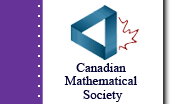We found 68 items matching your search.
 |
 |
 |
 |
 |
 |
|
|
| |

This article discusses some of the many ways in which math is used in agriculture. It considers specific agriculture processes, as well as a variety of math concepts.
|
AUTHOR(S): Natasha Glydon

|
 |
|
|
| |

Studying Mayan Numerals makes a good connection between Math and Social Studies. Lessons on Mayan Numerals can be designed for a wide range of ages. For the primary grades it may be fun to look at this concept using shells, pebbles, and stones. This will help the students learn about place values, and the sorting and collection of different objects. For grades 4 - 6 manipulatives may also be used and then the students can go on to try some problems on their own (suggested exercises given). A Mayan Numerals lesson would also lend nicely to teaching about time and the cycle of a year.
|
AUTHOR(S): Jamie Hubbard

|
 |
|
|
| |

A collection of elementary measurement resources compiled by students in a senior education mathematics class taught by Vi Maeers at the University of Regina.
|
AUTHOR(S): Sheri Rugland, Stacy Piquin, Margo Hunt, Nicole Hamm, Lynda Gellner, Nic...

|
 |
|
|
| |

Money Talks is one of the resources from the Stewart Resource Center. It contains two to three weeks of lessons on money at the grades three and four levels . Included are lessons, suggestions for on-going activities, support materials and resources.
|
AUTHOR(S): Wilna Ferre and Cora Gaillard

|
 |
|
|
| |

A Money Unit developed for Grade 5 includes Math, Integration,and Learning center activities, bulletin board ideas, suggested teacher resources and evaluation sections. Activites are tied back to the Saskatchewan Education Mathematics Curriculum Guide (Elementary) with Strands, Topics and CELS covered within the unit.
|
AUTHOR(S): Sandie Andrews

|
 |
|
|
| |

This is an article in the sixth edition of Ideas and Resources for Teachers of Mathematics, a newsletter published by the Saskatchewan Mathematics Teachers' Society. The topic of the fifth edition of the newsletter is geometry. Mr. Z describes an activity that he uses to help students remember the definitions of geometric shapes.
|
AUTHOR(S): Stephen Zabolotney

|
 |
|
|
| |

This note describes a situation which is familiar to students and constructs a mathematical model. A feature of this activity is that the problem described does not have a unique solution. Finding different solutions requires that the students have a good understanding of the problem, and different methods of solution provide an ideal opportunity for classroom discussion.
|
AUTHOR(S): Denis and Diane Hanson

|
 |
|
|
| |

This note shows mathematical concepts which can be developed through the use of children's literature. A list of books is included.
|
AUTHOR(S): Diane Hanson

|
 |
|
|
| |

This is the lead article in the seventh edition of Ideas and Resources for Teachers of Mathematics, a newsletter published by the Saskatchewan Mathematics Teachers' Society. The topic of the sixth edition of the newsletter is petterning and algebra. In this article Vi and Rick introduce the concept of pattern through some ideas from literature and through a recent 'pattern' experience.
|
AUTHOR(S): Mhairi (Vi) Maeers and Rick Seaman

|
 |
|
|
| |

This one of the articles in the seventh edition of Ideas and Resources for Teachers of Mathematics, a newsletter published by the Saskatchewan Mathematics Teachers' Society. This issue focuses of patterning and algebra. Here Shelly discusses how she introduces patterning in kindergarten and grade 1 through the use of colours, shapes and sizes.
|
AUTHOR(S): Shelley Sauter

|
 |
|
|
| |

This Stewart Resource unit deals with introducing the concept of patterning into the primary classroom. The unit provides a 10 day scope of learning objectives and the activites for each of the 10 days. Also included is activity suggestions for integrating this theme into other subjects.
|
AUTHOR(S): Alice Hanlin and Brian Amundrud

|
 |
|
|
| |

A collection of Place Value activities which have been developed for grades K-3. Includes ideas for concrete math materials to accompany each of the�activities.
|
AUTHOR(S): Andra McLeod

|
 |
|
|
| |

A unit filled with activities which provide many of ideas for integrating Plane Geometry into the elementary classroom. There are lots of hands on activities with manipulatives and real experiences. Activity lesson plans include Objectives, Materials, Directions and Extentions. Bibliography of resources used for compiling this unit is also included.
|
AUTHOR(S): Carol Lockhart

|
 |
|
|
| |

A collection of seventeen probability and statistics resources for the kindergarten to grade 6 levels. They arose from a workshop Craig gave on the Probability and Statistics strand in the Western Canadian Protocol. For each of the seventeen objective in
|
AUTHOR(S): Craig Loewen

|
 |
|
|
| |

A list of children's books useful in teaching mathematics at the kindergarten and grade one levels.
|
AUTHOR(S): Jeanne Blackmon

|

